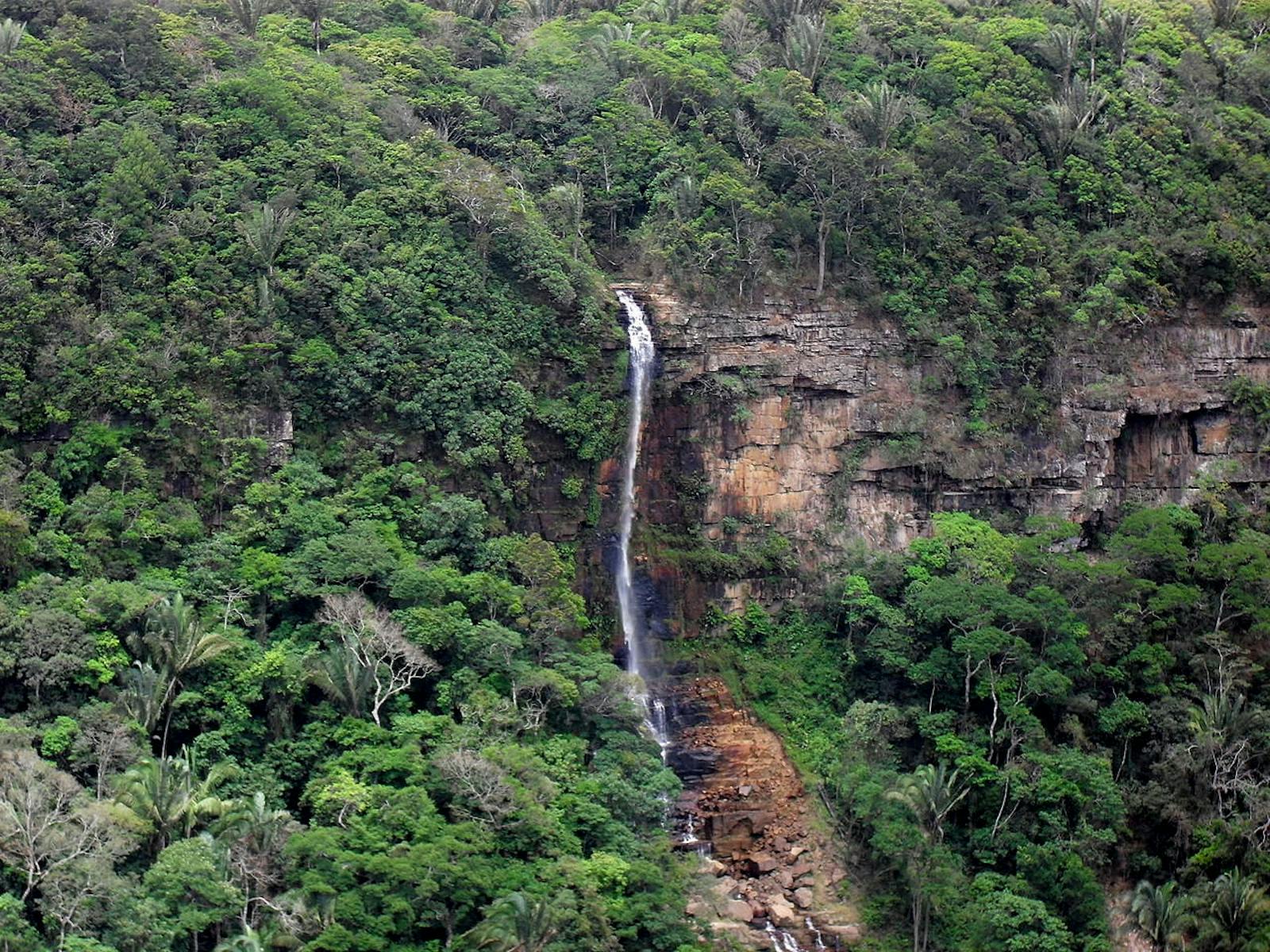Caatinga Enclaves Moist Forests
The ecoregion’s land area is provided in units of 1,000 hectares. The conservation target is the Global Safety Net (GSN1) area for the given ecoregion. The protection level indicates the percentage of the GSN goal that is currently protected on a scale of 0-10. N/A means data is not available at this time.
Bioregion: Brazilian Atlantic Dry Forests (NT15)
Realm: Southern America
Ecoregion Size (1000 ha):
481
Ecoregion ID:
445
Conservation Target:
45%
Protection Level:
6
States: Brazil
The Caatinga Enclaves Moist Forests is an archipelago of rainforest blocks in a sea of dry shrubland and savanna, which is the perfect habitat for the endemic buff-breasted tody-tyrant. This little bird spends a lot of time exploring dense vine tangle for small bugs and other prey items and is right at home in the moist forest. However, because its range is tied to the forest, populations have become naturally restricted to the forest islands in the matrix of savanna and increasingly croplands. Fortunately the buff-breasted tody-tyrant is still relatively common in the ecoregion and can be seen gleaning bugs from dripping leaves of the rainforest understory.
The Caatinga Enclaves Moist Forest consists of five established patches of Atlantic forest that are surrounded by a variety of dry Caatinga vegetation in northeast Brazil. The tropical climate has an annual rainfall averaging 1,000 to 1,300 mm and a dry season lasting from July through December. Forest enclaves are found mostly on four major regional plateaus: Chapada do Araripe, Serra de Ibiapaba, Serra de Baturité, and Serra da Borborema. The geological origins of these plateaus are diverse, dating from the Cretaceous to the Silurian times. T
hese forest cover the windy slopes and plateaus found in this part of Brazil. The main vegetation is Atlantic semi-deciduous moist forest that consists of four distinct layers, with trees rising more than 30 m in height. In the emergent and canopy layers, species of legumes, mahogany, and dogbane are numerous. Varying habitats between Atlantic forest, Caatinga dry forest, and Cerrado-like vegetation are found in these enclaves. A combination of tree species from Amazonian forest, caatinga, biologically rich savanna, and conifer from the southern area of the Atlantic forest distinguish this ecoregion from other forests of the Atlantic coast of Brazil.
Existing as forest islands within the surrounding semi-arid caatinga, forest enclaves are considered extraordinary natural laboratories which have confined populations of plants and animals that results in processes of speciation. In fact, some isolated populations have already differentiated enough to be recognized as distinct species. Examples of currently confined tree species are Podocarpus sellowii, Prunus sphaerocarpa, and Manilkara rufula.
The most extraordinary examples are found in amphibians and birds. The classic amphibian example is two species of forest frog in the genus Adelophryne. One species is endemic to Serra do Baturité whereas the other closely related species is restricted to Serra de Maranguape, only a few kilometers apart. An avian example is the Araripe's manakin, which was recently discovered on the forest slopes of Chapada do Araripe.
This ecoregion is recognized as a secondary Endemic Bird Area by Birdlife International. Endemic and restricted-range birds include Ochraceous pivulet, buff-breasted tody-tyrant, and mustached woodcreeper. Additional focal species for conservation include several trees species including tree species are Podocarpus sellowii (Podocarpaceae), Prunus sphaerocarpa (Rosaceae), and Manilkara rufula (Sapotaceae) and mammals such as the tayra and maned wolf.
Caatinga Enclaves Moist Forests are under stronger pressure by human activities than their semi-arid surroundings, because of its desirable climate. Consequently, these forests have been reduced in area by 96%. Forest conversion into subsistence agriculture fields continues at alarming rates. The remaining forests have been reduced in area by 96 percent. These small residual habitats only remain because of human inaccessibility.
Four protected areas, including Chapada Diamantina National Park, cover 399 km2 of semi-deciduous forest. Subsistence agriculture and logging for fuel wood threaten the remaining vegetation. The priority conservation actions for the next decade are to: 1) invest in forest cover recovery programs; 2) create Private Reserves of Natural Heritage (RPPN); and 3) establish forest corridors.
Citations
1. da Silva, Jose Maria C. 2018. Caatinga Enclaves Moist Forests. https://www.worldwildlife.org/ecoregions/nt0106. Accessed July 2, 2018.
2. Stattersfield, A.J., M.J. Crosby, A.J. Long, and D.C. Wege. (1998). A global directory of
3. Endemic Bird Areas. BirdLife Conservation Series. BirdLife International, Cambridge, U.K.
4. Lucherini, M. 2015. Cerdocyon thous. The IUCN Red List of Threatened Species 2015: e.T4248A81266293. Accessed June 28, 2019.



